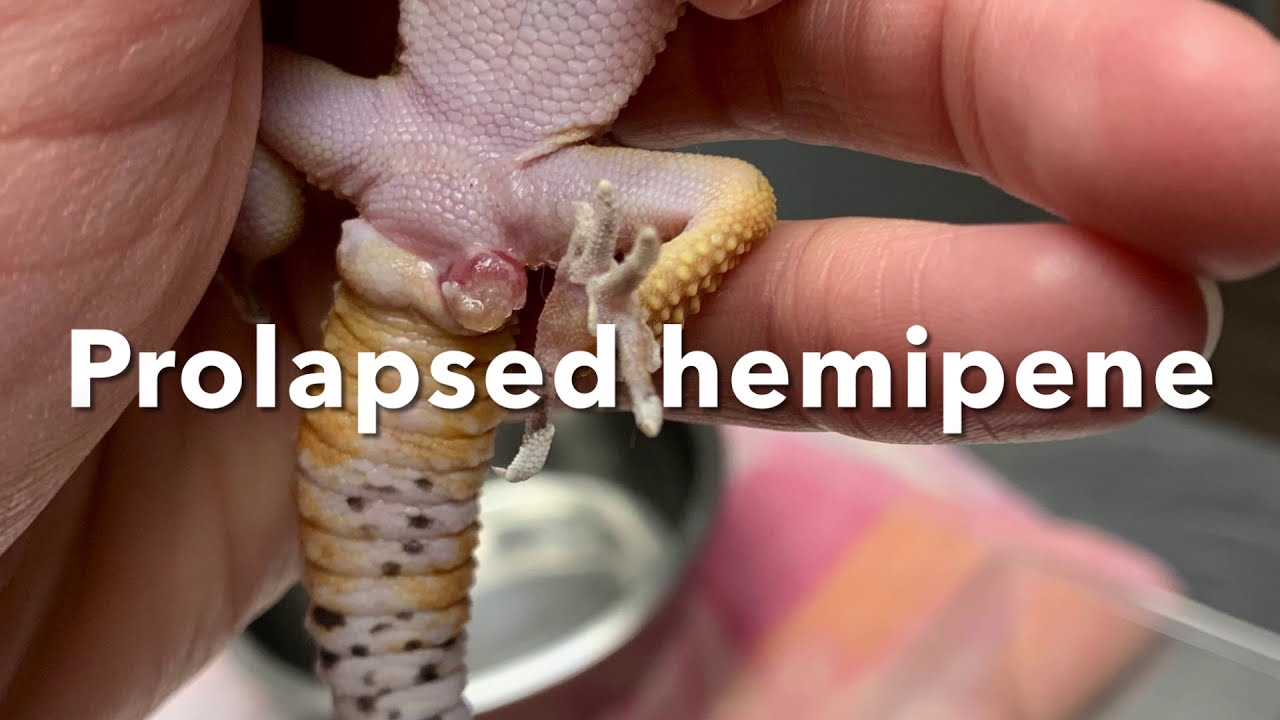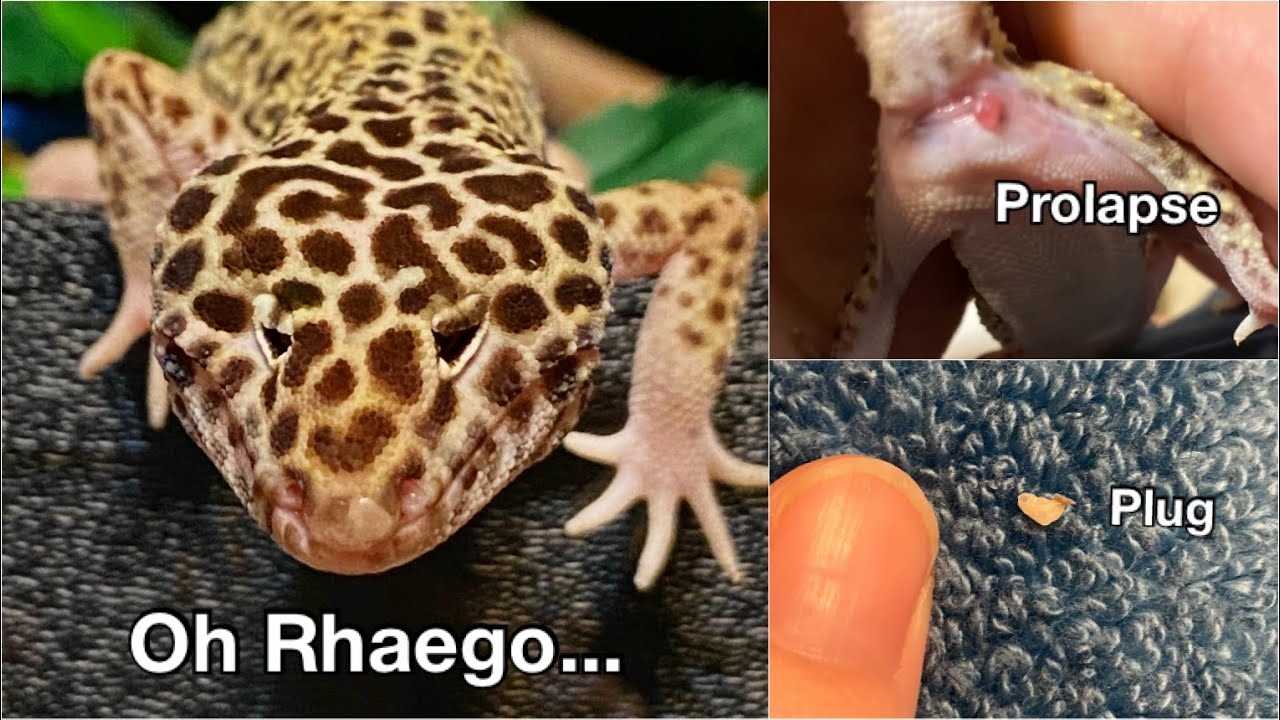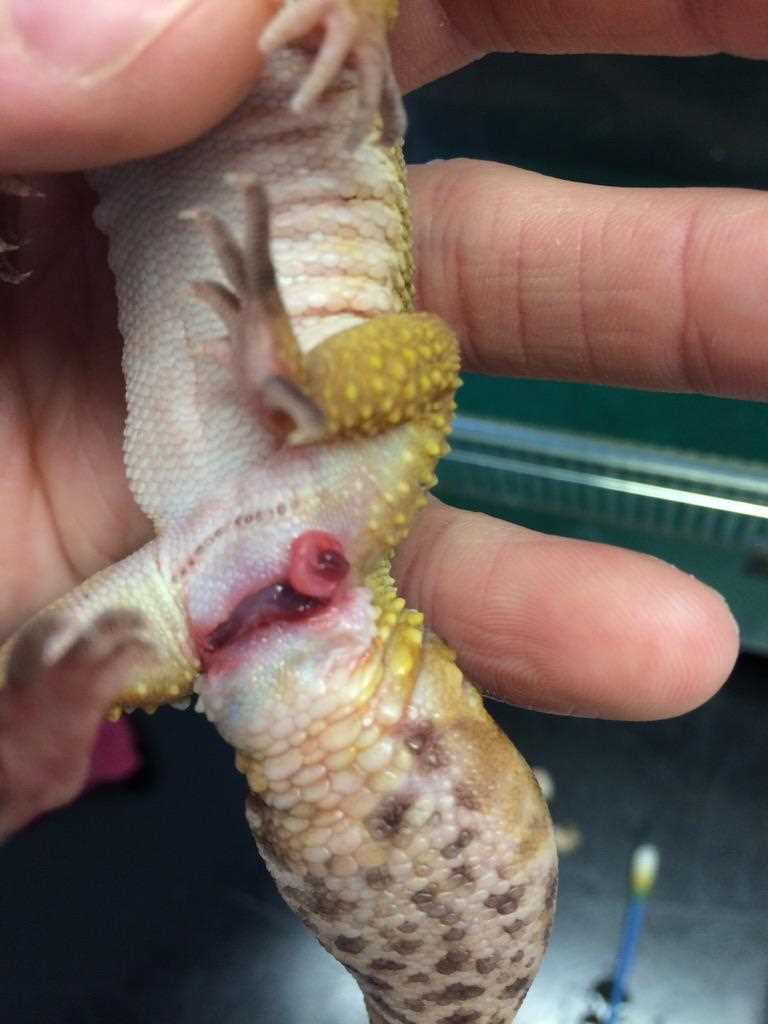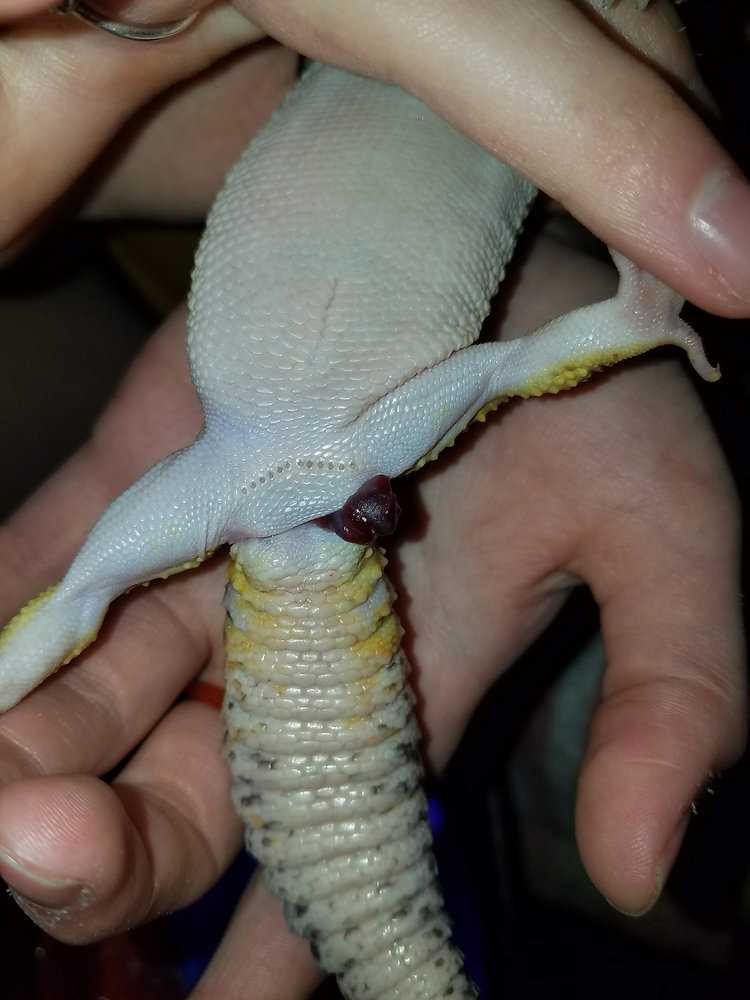Leopard geckos are fascinating reptiles known for their unique and vibrant appearance. With their distinctive spots and patterns, they are easily distinguishable from other lizards. These colorful creatures are native to the arid regions of Afghanistan, Pakistan, and India, where they have adapted to survive in harsh desert environments.
One of the most intriguing aspects of leopard geckos is their tail, which serves multiple purposes. Not only does it store fat reserves to sustain them during periods of food scarcity, but it also plays a crucial role in mating and defense. When threatened, leopard geckos can voluntarily shed their tail as a defense mechanism, distracting predators and allowing them to escape.
However, it is their reproductive organs that truly set them apart from other reptiles. Like all male reptiles, leopard geckos have a unique feature called hemipenes, which are located within their cloaca. The term “hemipenes” refers to the paired, eversible copulatory organs found in male reptiles. During mating, these reproductive organs are extruded from the cloaca and inserted into the female’s cloaca, enabling successful fertilization.
The Anatomy of Leopard Gecko Hemipenes
The leopard gecko, a reptile native to Afghanistan, Iran, Pakistan, and parts of India, is a popular pet due to its small size, docile nature, and unique physical features. One of the most fascinating aspects of the leopard gecko’s anatomy is its hemipenes.
Hemipenes are the reproductive organs of male reptiles, including leopard geckos. Unlike mammals, reptiles have internal reproductive structures, and the hemipenes play a crucial role in the reproduction process.
Anatomy and Structure
Leopard gecko hemipenes are located inside the base of the tail and are not externally visible. They consist of two separate structures, each called a hemipenis. The term “hemipenis” comes from the Greek words “hemi,” meaning half, and “penis,” referring to the male reproductive organ.
The hemipenes are symmetrical and mirror each other in structure. Each hemipenis has a long and tubular shape, similar to a snake’s tongue. They are covered in tiny spines or scales called papillae, which help the hemipenes maintain grip during mating.
When not in use, the hemipenes are stored inside the tail, folded like an accordion. During mating, the gecko everts one of the hemipenes, pushing it out of the body through an opening called the cloaca.
Function and Reproduction
The primary function of leopard gecko hemipenes is reproduction. When a male leopard gecko finds a suitable mate, he uses his hemipenes to transfer sperm into the female’s cloaca. The sperm then travels through the female’s reproductive tract to fertilize the eggs.
The hemipenes also play a role in courtship behavior. Male leopard geckos may use their hemipenes to engage in a behavior called “tail waving,” where they move their tail back and forth to attract females. This motion allows the female to visually inspect the male’s tail and assess his reproductive fitness.
Conclusion
The Structure and Composition of Hemipenes in Leopard Geckos
Anatomy of Hemipenes
The hemipenes of leopard geckos are located within the cloaca, a common opening for the urinary, digestive, and reproductive systems. These specialized organs consist of two elongated, tubular structures that are housed within the tail of the gecko. Each hemipene is covered in scales, similar to the scales found on the rest of the gecko’s body.
The scales on the hemipenes serve several purposes. Firstly, they provide protection to the delicate structures inside. Additionally, they aid in the process of inserting the hemipenes into the female gecko’s cloaca during mating. The scales help to grip and prolong the connection between the male and female, ensuring successful fertilization.
Composition of Hemipenes
The composition of hemipenes in leopard geckos is complex and consists of various tissues and structures. The outermost layer of the hemipenes is comprised of keratin, the same substance found in the gecko’s scales. This keratinized layer provides strength and support to the organ, allowing it to maintain its structure during mating.
Within the hemipenes, there are intricate networks of blood vessels and erectile tissues, similar to those found in the male reproductive organs of other animals. These tissues fill with blood, causing the hemipenes to become erect and ready for reproduction. When not in use, the hemipenes can retract inside the tail, remaining hidden until needed.
Function of Hemipenes

The primary function of leopard gecko hemipenes is for reproduction. During mating, the male gecko will insert one of his hemipenes into the female’s cloaca, allowing for the transfer of sperm. The intricate structures and specialized tissues within the hemipenes facilitate this process.
It’s worth noting that leopard geckos have a unique reproductive trait called bilateral copulation, meaning that both hemipenes are used during mating. This ensures a higher chance of successful fertilization and increases the gecko’s overall reproductive success.
The Function of Leopard Gecko Hemipenes
The hemipenes are unique reproductive organs found in male reptiles, including leopard geckos. These specialized structures play a crucial role in the reproduction of the species.
Anatomy and Structure:
The hemipenes of a leopard gecko are located within the base of the tail, protected by rows of scales. When not in use, the hemipenes are retracted into the body. Each gecko has a pair of hemipenes, which are essentially two organs fused together but can function independently.
The tip of each hemipene is covered in small, spiky structures called spines. These spines aid in gripping the female gecko during copulation, ensuring successful insemination. The size and shape of the spines can vary between individual geckos.
Reproductive Function:
The hemipenes also act as storage for sperm. Leopard geckos have the ability to store sperm from a single mating for several consecutive clutches, allowing them to potentially fertilize multiple batches of eggs from a single insemination.
Mating Behavior and Courtship:
Leopard geckos engage in ritualistic behaviors when preparing to mate. The male may perform a courtship dance, which involves waving his tail, bobbing his head, and licking the female. This behavior stimulates the female and increases the chances of successful copulation.
Once the male has successfully inserted one of his hemipenes, copulation can last anywhere from a few minutes to several hours. The male will then disengage and may attempt to mate with the female again at a later time.
Conclusion:
The Importance of Hemipenes in Reproduction
Structure of Hemipenes
Hemipenes are tubular organs located on either side of the ventral part of the leopard gecko’s tail. They are housed within the base of the tail and are concealed by the lizard’s colorful scales. When not in use, the hemipenes are inverted and stored inside the tail.
The structure of hemipenes is highly specialized and allows for efficient sperm transfer. The outer surface of the hemipenes is covered in small spines or hooks that help to anchor the organ inside the female’s reproductive tract during mating. These hooks provide the necessary grip for successful copulation.
Reproduction Process
During the breeding season, male leopard geckos will use their hemipenes to transfer sperm into the female’s cloaca. The cloaca is a common opening for the digestive, urinary, and reproductive systems. The male successfully inserts one hemipene at a time into the female’s cloaca, allowing for the transfer of sperm.
Once inside the cloaca, the sperm travels through the female’s reproductive tract, eventually reaching the oviducts. Fertilization of the eggs occurs within the oviducts, after which the female will lay her eggs, usually within a few weeks.
Importance of Hemipenes
Leopard gecko owners should ensure that their males have healthy hemipenes to increase the likelihood of successful reproduction. Regular examination of the hemipenes is necessary to detect any issues such as infections, tumors, or prolapse. A well-maintained hemipene is crucial for the overall health and reproductive success of a male leopard gecko.
Caring for Leopard Gecko Hemipenes
Anatomy of Hemipenes
Hemipenes are the reproductive organs found in male leopard geckos. They are located within the base of the tail and are usually not visible from the outside. However, they can be felt as small bulges under the skin. Female geckos do not possess hemipenes.
Function of Hemipenes
Care for Hemipenes
In order to ensure the health and well-being of leopard gecko’s hemipenes, it is essential to provide a proper habitat or terrarium. The habitat should include a substrate that is soft and does not cause any friction or injury to the gecko’s vent area. This helps in preventing any damage to the hemipenes while the gecko is moving or digging in the enclosure.
Maintaining a clean and hygienic terrarium is also crucial for preventing infections or diseases that can affect the hemipenes. Regular cleaning, removing waste, and providing appropriate humidity levels can help in keeping the hemipenes healthy.
Handling the gecko should be done with caution, especially when dealing with the vent area. Any rough handling or excessive pressure can lead to injury or damage to the hemipenes.
Tips for Hemipene Health
Here are some tips for maintaining the health of leopard gecko hemipenes:
– Provide a suitable substrate that is soft and safe for the gecko’s vent area.
– Keep the terrarium clean and maintain appropriate humidity levels.
– Handle the gecko with extreme care, avoiding any pressure on the vent area.
– Monitor the gecko’s behavior and health regularly to detect any signs of infection or injury.
By following these care tips, leopard gecko owners can ensure the well-being of their pet’s hemipenes and contribute to their overall reproductive health.
Tips for Maintaining Hemipene Health
Proper care and maintenance of leopard gecko hemipenes are essential to ensure the health and well-being of these unique reptiles. Here are some tips to help you keep your gecko’s hemipenes in optimal condition:
1. Clean and Sanitize the Terrarium Regularly

A clean and hygienic habitat is crucial for preventing infections and diseases that can affect the hemipenes. Regularly clean the terrarium, removing any waste, uneaten food, and soiled bedding. Use a reptile-safe disinfectant to sanitize the enclosure, paying attention to areas where the gecko frequently spends time.
2. Monitor the Condition of the Hemipenes
Check the hemipenes regularly for any signs of damage, injury, or infection. Look for any discharge, swelling, redness, or abnormalities in shape or color. If you notice any issues, consult a reptile veterinarian for proper diagnosis and treatment.
3. Avoid Excessive Handling
Limit handling of the leopard gecko to avoid unnecessary stress and trauma to the hemipenes. Excessive handling can lead to injuries or damage to the delicate structures of the hemipenes. When you do handle your gecko, make sure to do so gently and support their body to minimize any strain on the tail and hemipenes.
4. Provide a Proper Diet
A balanced diet is crucial for overall health, including the health of the hemipenes. Offer a varied diet that includes gut-loaded insects, such as crickets and mealworms, as well as a calcium and vitamin D3 supplement. These nutrients are essential for maintaining strong and healthy hemipenes.
5. Maintain Optimal Temperature and Humidity
Leopard geckos require specific temperature and humidity levels for their overall well-being. Maintaining the proper temperature and humidity in the terrarium is also important for the health of the hemipenes. Use a thermometer and hygrometer to monitor these levels and make any necessary adjustments.
6. Avoid Rough Substrates

Choose a soft and non-abrasive substrate for the terrarium to prevent any injuries or irritation to the hemipenes. Avoid substrates with sharp edges or rough textures that can rub against the scales and delicate tissues of the hemipenes.
7. Regular Veterinary Check-ups

Schedule regular check-ups with a reptile veterinarian to ensure the overall health of your leopard gecko, including the hemipenes. A veterinarian can perform a thorough examination and provide guidance on proper care and maintenance of these unique reproductive structures.
By following these tips, you can help maintain the health and well-being of your leopard gecko’s hemipenes, ensuring their ability to reproduce successfully and live a healthy, colorful life.
Common Issues and Diseases Affecting Leopard Gecko Hemipenes
Hemipenes are the reproductive organs of male leopard geckos. They are located on either side of the tail and are used during mating to deliver sperm to the female. While hemipenes are essential for reproduction, they can also be prone to certain issues and diseases that pet owners should be aware of.
One common issue that can affect leopard gecko hemipenes is prolapse. Prolapse occurs when the hemipenes become stuck outside of the body and cannot be retracted back in. This can be caused by a variety of factors, including injury, dehydration, or a bacterial infection. If not addressed promptly, a prolapsed hemipene can become infected and even lead to the death of the gecko.
Another issue that can affect hemipenes is impaction. This occurs when the hemipenes become blocked by a foreign object or a build-up of debris. Impaction can be caused by improper substrate in the terrarium, such as sand or loose bedding, which can get stuck in the hemipenes and cause discomfort or infection. Regular cleaning and proper substrate selection can help prevent impaction.
Additionally, leopard geckos can also develop hemipene infections, which are usually caused by bacterial or fungal overgrowth. These infections can be characterized by redness, swelling, or discharge from the hemipenes. Proper hygiene and regular cleaning of the terrarium can help prevent these infections.

I’m Lena Adams—a product of an unconventional upbringing in the African wilderness. My father, a daring explorer of African wildlife, sparked my fascination with reptiles, a passion that intertwined with the tragic loss of my mother during an expedition, leaving an indelible mark on my life. Driven to understand the creatures that captivated my parents, I embarked on my journey, sharing insights about reptiles, frogs, and lizards on my website. Through my explorations and conservation efforts, I honour my family’s legacy while seeking connections—to the creatures, nature, and the mother whose presence I yearn to understand.
